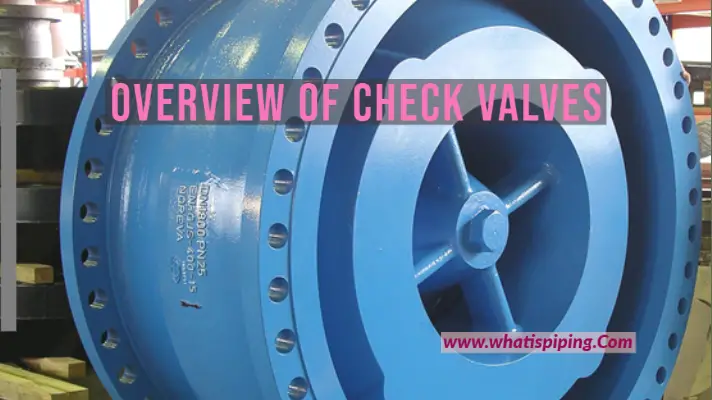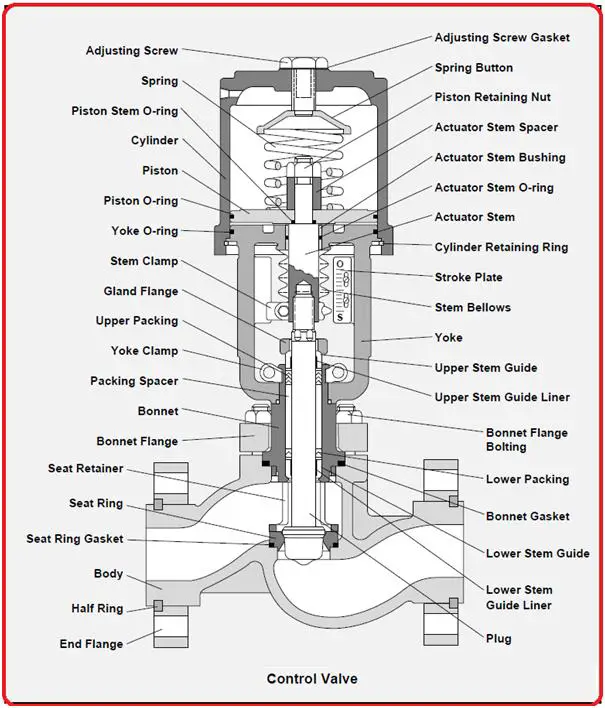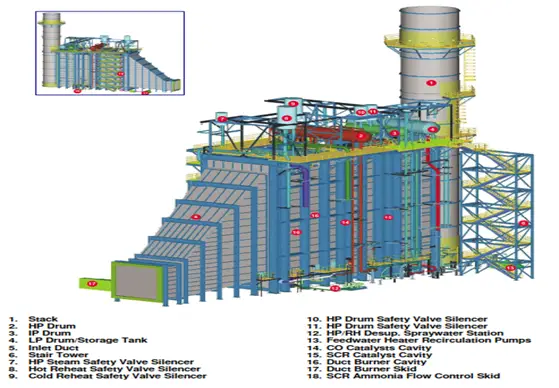A steam valve is a specific type of valve that is used to control the flow and/ or pressure level of steam and hot water vapor. Steam valves are used in piping systems carrying hot water vapor or steam. Steam is widely used in various industrial applications. Typical examples of steam applications include power plant steam turbines to generate electrical power, food industries, chemical, and other product processing. Further, steam is also used for heating, humidification, and cleaning services. So, the flow and pressure for all such applications must be controlled for better efficiency. Here, comes the importance of steam valves. Proper control over steam and water vapor is achieved by the use of steam valves in systems.
Functions of Steam Valves
As already mentioned, steam valves serve as control valves in the steam piping network. So, it majorly performs any of the below-mentioned three functions:
- Controlling or reducing steam pressure from inlet to application. Lower steam pressure is synonymous with improved plant safety.
- Controlling temperature
- Flow control or regulation.
Types of Steam Valves
There are various types of valves for steam services. As steam is usually used as high-temperature and pressure media, some specific service conditions must be met for steam valves. The common types of industrial steam valves are discussed below.
Ball Valves as Steam Valves
Ball valves are popular as industrial steam valves as they provide tight shut-off, predictable control, and long service life. In this type of steam control valve, a rotary ball having a bore controls the steam flow. The ball can rotate 90 degrees around its axis. Depending on the design of the regulating element, steam ball valves have a range of uses. However, the controlling accuracy of steam ball valves is limited.
Globe valves as Industrial Steam Valves
Globe valves with rounded bodies are also suitable for steam services. Steam globe valves are linear motion valves. For regulating the steam flow in both on/off and throttling services, globe valves provide wide applications. Globe valves as steam valves are popular because of their precise throttling and control, along with high-pressure limits.
Butterfly Valves as Steam valves
Butterfly valves have a disk to control the steam flow. These types of steam valves are used as throttling valves. They Butterfly valves consist of a rotary stem having 90 degrees or less movement within a compact design.

Angle valves as Steam valves
Angle steam valves are linear actuated valves that provide an excellent flow rate with minimal pressure loss. They are basically pneumatically actuated piston valves that can regulate the steam flow at high temperatures. Steam angle valves have a long service life.
Gate/ Knife Valves for Steam services
Using a flat closure element that slides into the flow stream to provide shut-off, Gate or Knife valves are also used in steam services. In general, there are two types of steam gate valves: parallel and wedge-shaped. Parallel gate valves consist of a flat disc gate between upstream and downstream parallel seats. Knife valves have a sharp edge on the bottom of the gate.
Diaphragm Valves as Steam Valves
Diaphragm valves use a ‘pinching’ method to stop the steam flow through the valve using a flexible diaphragm. The main advantage of using diaphragm steam valves is that the valve components can easily be isolated from the fluid.
3-way Steam Valve
A 3-way steam valve is used in situations when three pipes are required to be connected in a single valve. 3-Way steam valves can have different types of configurations like 1 inlet and 2 outlets, Two inlets and one outlet, Port 1 to port 2 with the flow and port 3 isolated, Port 1 to port 3 flow with port 2 isolated, etc. The type of 3-way steam valve configuration is decided based on the actual application needs.
Non-return Steam valves
This type of valve allows the flow of steam only in one direction. Known as check valves for steam, these valves have one inlet and one outlet port. They prevent steam backflow into the system.
Pressure Release Valves for Steams
Steam systems can have pressure-release valves as well. To prevent excessive pressure built-up in the system, stream pressure release valves are proven to be highly effective. By releasing the excess pressure these types of steam valves safeguard the system from damage.
Steam Solenoid Valves
Electrically controlled steam solenoid valves can be designed to be either linear or rotary type. Consisting of a solenoid, an electric coil, and a plunger, solenoid steam valves use magnetic fields for their operation. Steam solenoid valves are fast-acting and costly.
Steam Valve Specifications
A lot of different parameters must be considered for specifying a steam valve. Some of the common factors for steam valve specification are:
- Environment,
- Design pressure,
- Design temperature,
- Connection,
- Flow rate
- Type of steam valve,
- Type of actuation,
- Valve materials,
- Body size of the valve
- Connection requirement
- Nominal pressure rating
- Noise level
- Pressure drop
- Leakage and isolation requirements
- Turndown
- Rangeability
- Flow requirements, etc
A range of materials like aluminum, brass, bronze, cast iron, copper, steel, and stainless steel are used to produce industrial steam valves. The actuation mechanism of steam valves uses common valve actuation methods like mechanical, electrical, pneumatic, or thermal actuation.
Sizing of Steam Control Valves
The sizing of steam control valves is a highly complex matter. Various parameters must be taken into account while sizing control valves for steam services. Some of these parameters that decide the size of a steam control valve are:
- Pressure and Temperature.
- Type of Steam
- Rate of Steam Flow
- Valve outlet velocity
- Noise
- Erosion effect
- Pressure drop (upstream and downstream steam pressure)
- Types of Valve
Applications of Steam Valves
Steam valves are used in all industries using steam in their operation. Common industries where steam valves are widely used are:
Processing Industries: Food processing factories, refineries, chemical, and petrochemical plants. Saturated steam is used as the heating source in various process equipment like heat exchangers, reboilers, combustion air preheaters, reactors, and other types of heat transfer equipment.
Cleaning Industries: Steam has the capability to clean a broad range of surfaces. So, steam valves are found to control high-temperature steam to sterilize food preparation equipment. For removing grease and dirt from industrial equipment during maintenance and paint preparation, steam is used which calls for steam valves for proper control.
Power Plants: The energy to drive the turbines are provided by the steam. So, various gas, coal, nuclear and certain solar plants use a number of steam valves in their network to handle superheated and saturated steam.
Atomization Industries: Steam is also used to atomize a liquid for the purpose of separating liquids. So, steam valves are used in such industries.
Moisturization Industries: Steam can add water to a process alongside providing heat energy.
Heating Plants: Many large commercial and industrial facilities use steam valves for regulating low-pressure saturated steam as the predominant heat source for indoor heating.








